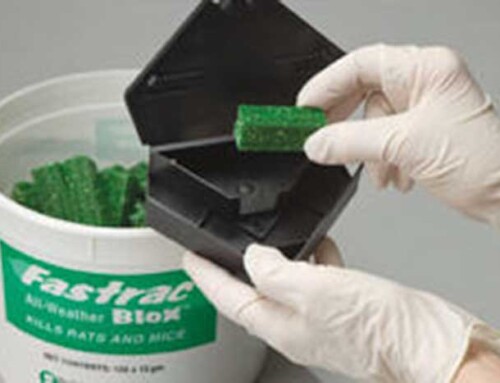Flying Insects that Sting!
Hornets.
Hornets are among the largest of the social kind of wasps with their size reaching up to 45 mm in length.
A Hornet’s Life
The nest is established in spring time by a fertilized queen. The nest is created in sheltered places like dark hollow tree trunks. The queen hornet will build an initial nest of up to 50 cells. This is made by utilizing chewed up tree bark. One egg will be laid in each cell. The eggs hatch in 5 to 8 days. The larvae will develop through five instars for two weeks.
It is in these 2 weeks that the queen would feeds the larvae with insects. At the end of this period the larvae would come out of the cell as an adult having eaten its way out of the silk cap on the cell. This first generation of workers is mostly comprised of females. These worker hornets will now forage, build nest and take care of larvae. Only queen lays the eggs.
The population keeps growing. New layers of the combs are added and the nest grows. By late summer the colony could number up to 650 workers.
By the time the nest has matured, the queen starts to produce the first reproductive individuals. Fertilized eggs develop into females an unfertilized ones into males. The adult males do not forage or take care of the nest. In fall season the male leave the nest and mate during nuptial flights and die shortly after mating. The workers and queens survive at most until mid to late fall. And only the fertilized queens survive over winter.
Foraging
Workers themselves feed primarily on carbohydrate-rich fluids such as tree sap. They also hunt other insects such as flies, dragonflies and smaller wasps and bees. After killing their prey all nutrient-poor parts such as the wings, legs, and head may be discarded but the thorax with the protein-rich flight muscles is delivered to the larvae. To keep the nest from over heating the workers will bring water to the nest and deposit it on the envelope.
Nest Responsibilities
This mostly constitutes building new cells and comb layers. And feeding the larvae with masticated prey flesh.
Stings
A hornet’s sting is painful to humans, but the sting toxicity varies greatly by hornet species. Some deliver just a typical insect sting, while others are among the most venomous known insects. Allergic reactions, fatal in severe cases, can occur in individual suffering from anaphylactic shock may die unless treated immediately via epinephrine (“adrenaline”) injection using a device such as an EpiPen, with prompt follow up treatment in a hospital.
Hornet Defense Alarm
Like most social wasps, Hornet can mobilize the entire nest for defense. This can be highly dangerous to humans and animals. The hornet alarm pheromone tells all that the nest is under attack. Same pheromone is used to indicate prey as well such as bees.
What not to do ?
Hornets Extermination Technique and its Advantages:
We utilize the most effective insecticide Spray and Fog agents available from the leading pesticides manufactures. These pesticide are highly effective and contain most powerful active ingredients. We employ the Spray and Fog technique to Control, and Exterminate the Hornets infestations.
Some of the Characteristics of the Spray and Fog technique are:
- It is the best option when there is no Bait available for a given Pest. A targeted application of Control Agents in selected areas of the structure is undertaken. In cases of high infestations, spraying upon the pests produces a spectacular knock down.
- Areas that are targeted are the nesting and foraging activities areas of the Pest.
- Hornets are affected by the insecticide active agent when they come into contact with the treated surfaces.
- Hornets would be exterminated by getting the Active Ingredient into it’s biological system via contact. An affected pest may also prove to be a source of secondary poisoning for other members.
- The Insecticide Spray method results in gradual, almost fool-proof and guaranteed removal of these pests.
Client’s Preparations for Insecticides Application:
- Client is required to prepare areas to be treated with insecticide spray application.
- Client is required to leave the property during the application and stay out for further 2 hours after the application.
Our exterminators will inspect the structure for points of vulnerabilities that may facilitate future infestations or conditions that may be helping the Hornets to flourish. It will be up to the property owner to act on the recommendations.
Specific Notes on Spray or Fog Application:
Spray may be Water-Based or of the Emulsion type. Even though it would not stain or damage surfaces, it may be noticeable as a thin film of light color. The film may also have oily characteristics. If it is found on any surfaces that are used by people or pets, then it should be cleaned away at the earliest. For further information, please, see our Pesticides and the MSDS page.
Expected Results and Outcome of the Treatment:
In about 3-5 weeks, all Hornets would have been eliminated having directly or indirectly been exposed to the insecticide sprayed. Gradually Hornets would simply cease to exist. It remains possible that some Hornets may expire near human living spaces.
At Quest Pest Management Inc., we have the highest success rate of complete elimination of Hornets with one treatment alone.
Prior to carrying out treatment for Hornets, we will do an inspection or survey of the property to determine the extent and scope of the infestation. In doing so, we will also obtain information from people present on site.






